 Histplot
Histplot
The distributions module contains several functions designed to answer questions such as these. The axes-level functions are histplot, kdeplot, ecdfplot, and rugplot. They are grouped together within the figure-level displot function.
A histplot is a classic visualization tool that represents the distribution of one or more variables by counting the number of observations that fall within discrete bins.
Click the slider to view possible arguments for the plot!
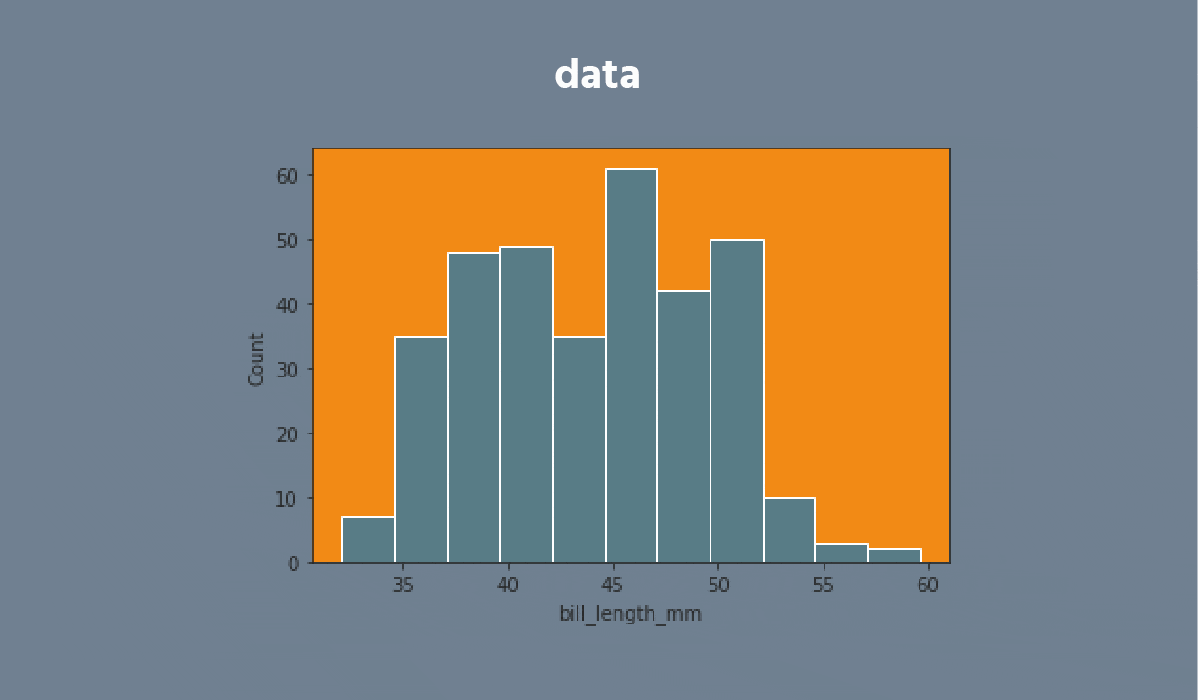


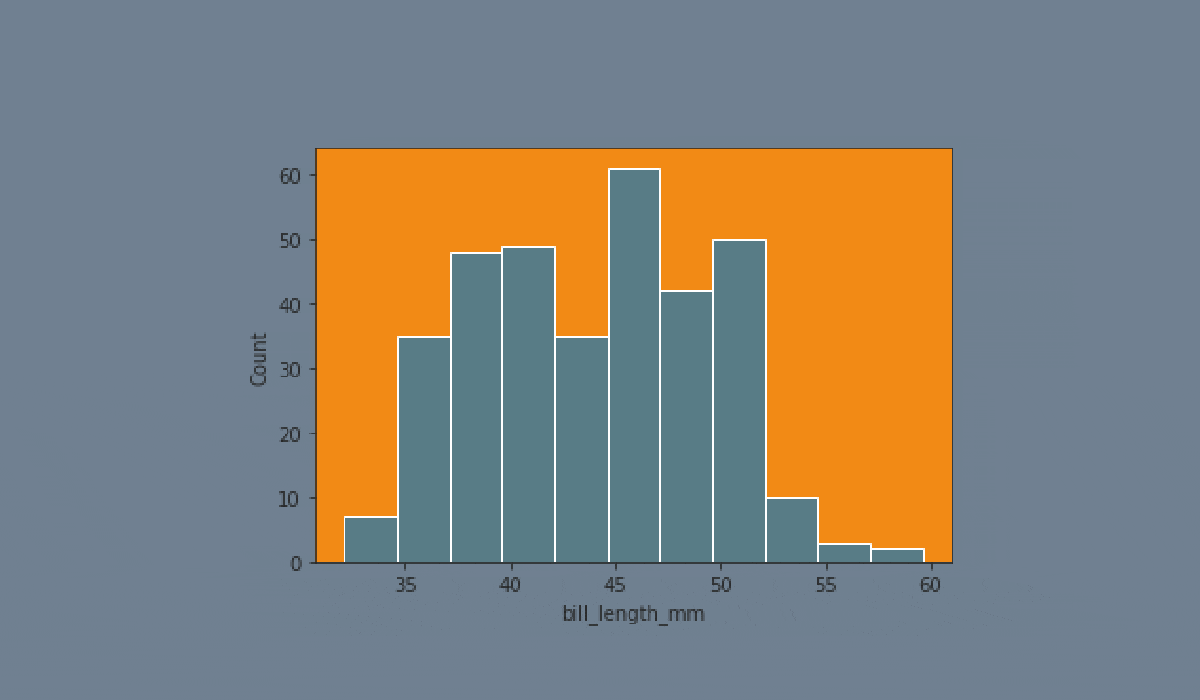



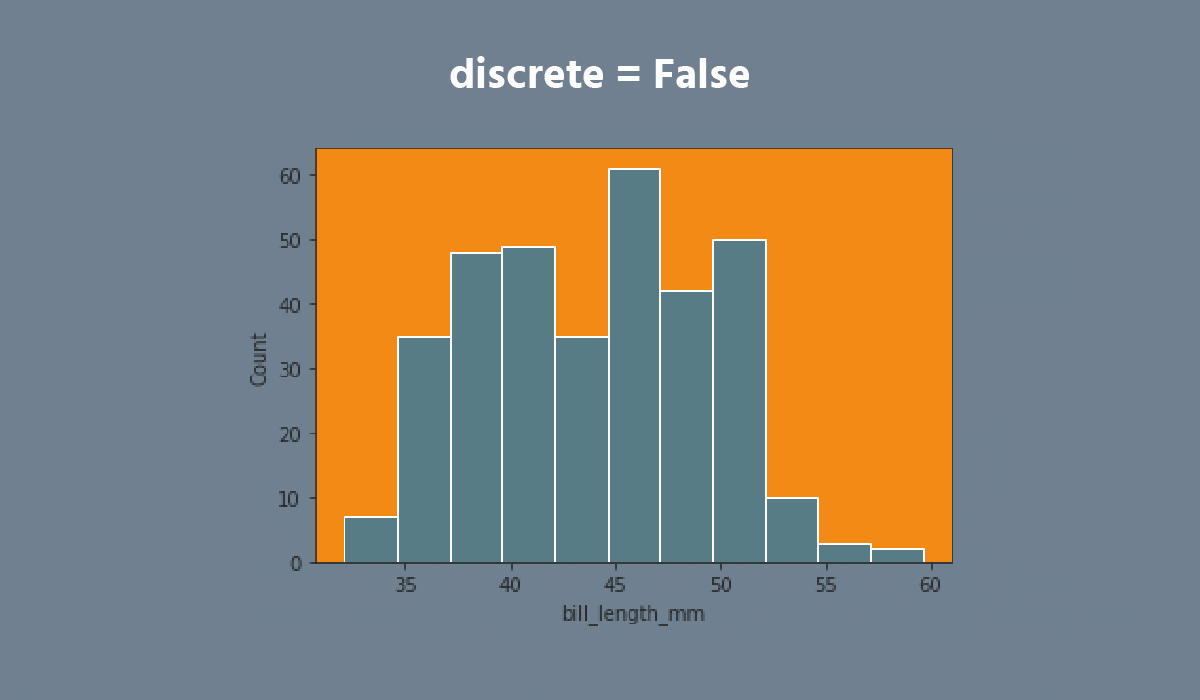
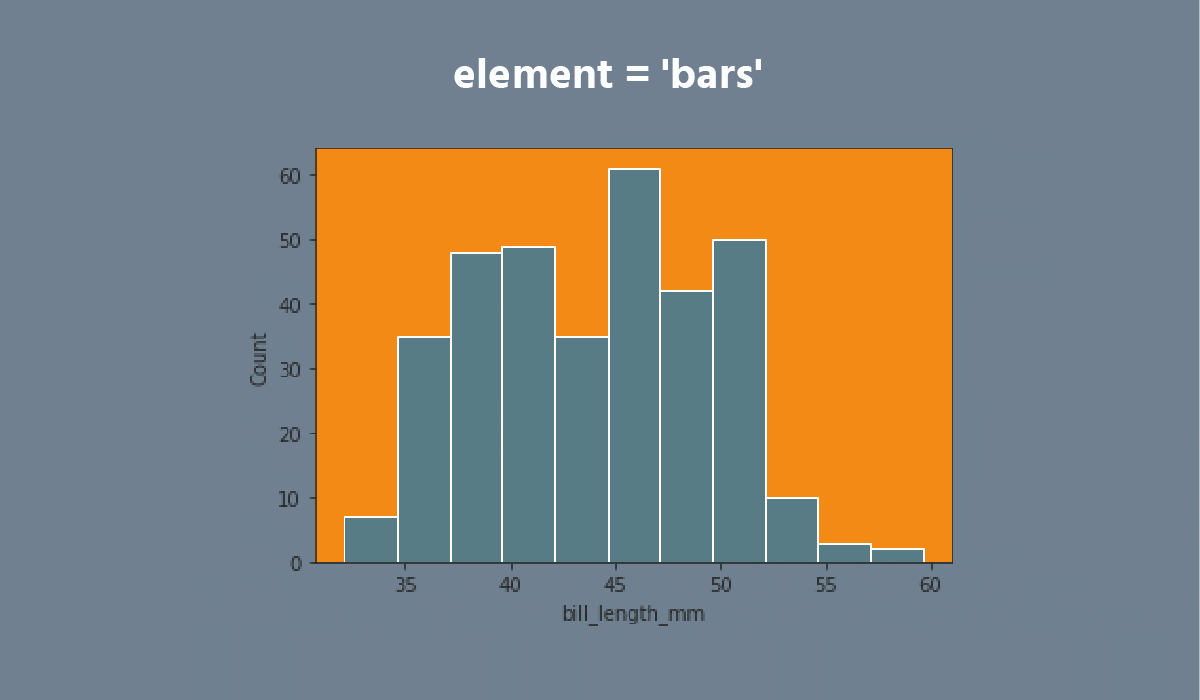




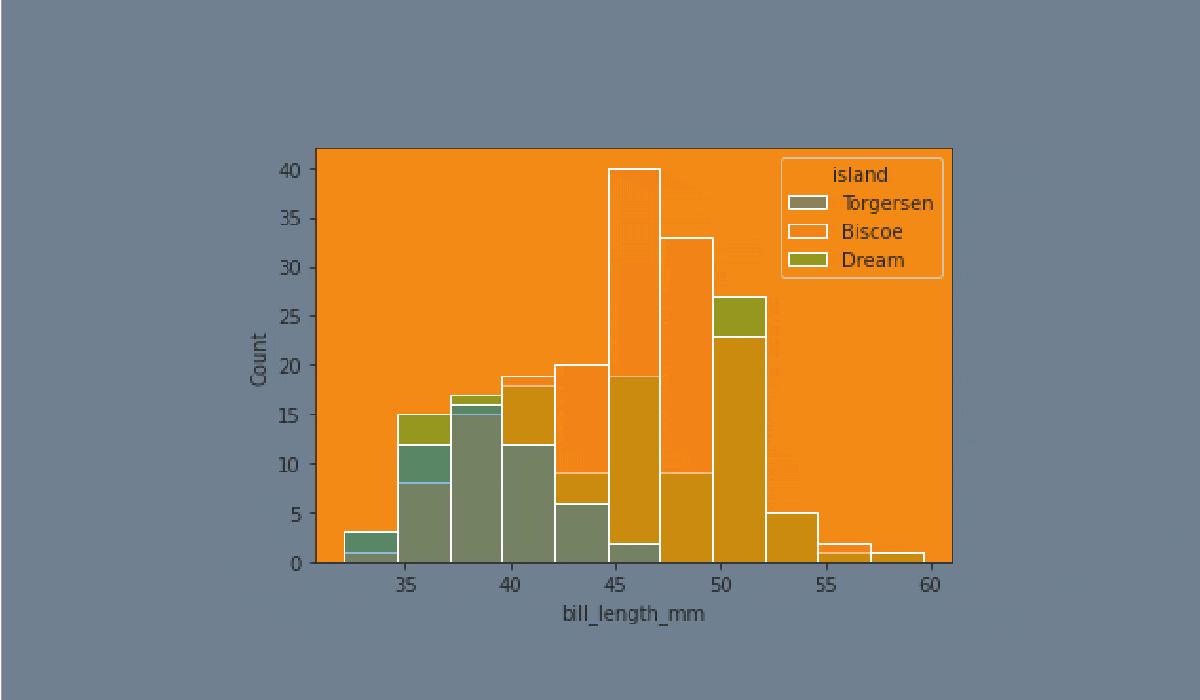
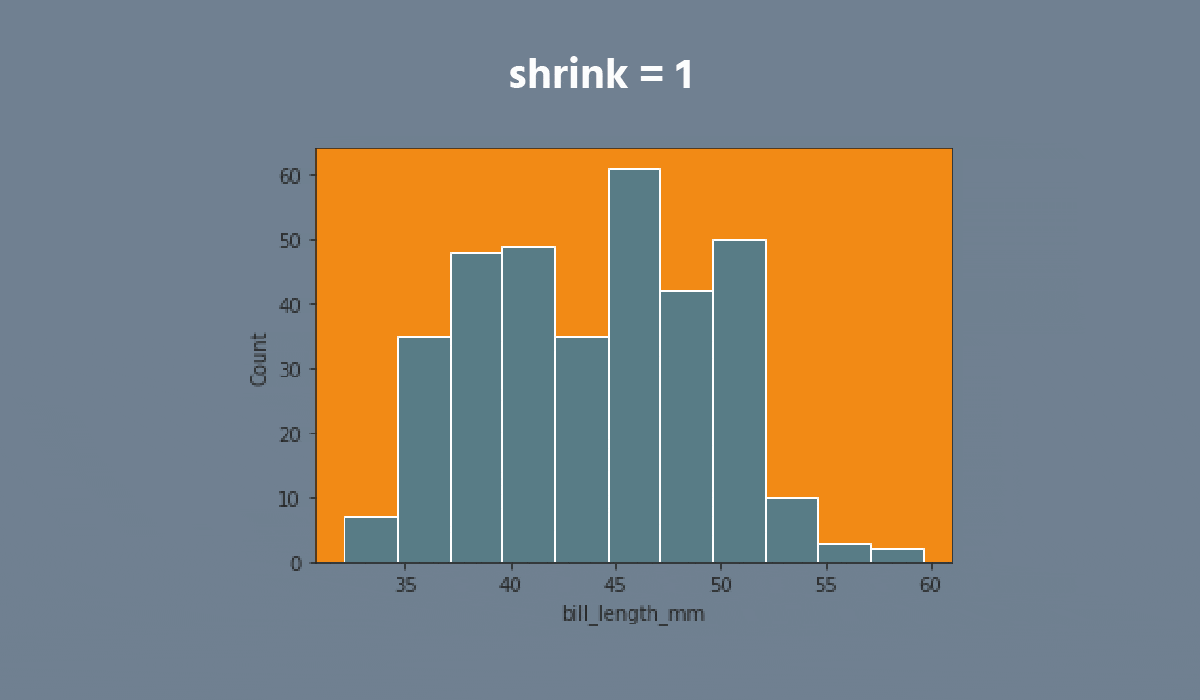

Don't forget to return back after exploring the dataset!
Note
Use
plt.show()to display the plot.
Swipe to start coding
- Create the histplot using the
seabornlibrary:
- Set the
xparameter equals the'bill_length_mm'; - Set the
hueparameter equals the'island'; - Set the
elementparameter equals the'step'; - Set the
statparameter equals the'density'; - Set the
binwidthparameter equals1; - Set the
'flare'palette; - Use the
dfdata for the plot; - Display the plot.
Lösning
Tack för dina kommentarer!
single
Fråga AI
Fråga AI

Fråga vad du vill eller prova någon av de föreslagna frågorna för att starta vårt samtal
Sammanfatta detta kapitel
Explain code
Explain why doesn't solve task

Fantastiskt!
Completion betyg förbättrat till 4.35 Histplot
Histplot
Svep för att visa menyn
The distributions module contains several functions designed to answer questions such as these. The axes-level functions are histplot, kdeplot, ecdfplot, and rugplot. They are grouped together within the figure-level displot function.
A histplot is a classic visualization tool that represents the distribution of one or more variables by counting the number of observations that fall within discrete bins.
Click the slider to view possible arguments for the plot!
















Don't forget to return back after exploring the dataset!
Note
Use
plt.show()to display the plot.
Swipe to start coding
- Create the histplot using the
seabornlibrary:
- Set the
xparameter equals the'bill_length_mm'; - Set the
hueparameter equals the'island'; - Set the
elementparameter equals the'step'; - Set the
statparameter equals the'density'; - Set the
binwidthparameter equals1; - Set the
'flare'palette; - Use the
dfdata for the plot; - Display the plot.
Lösning
Tack för dina kommentarer!
single